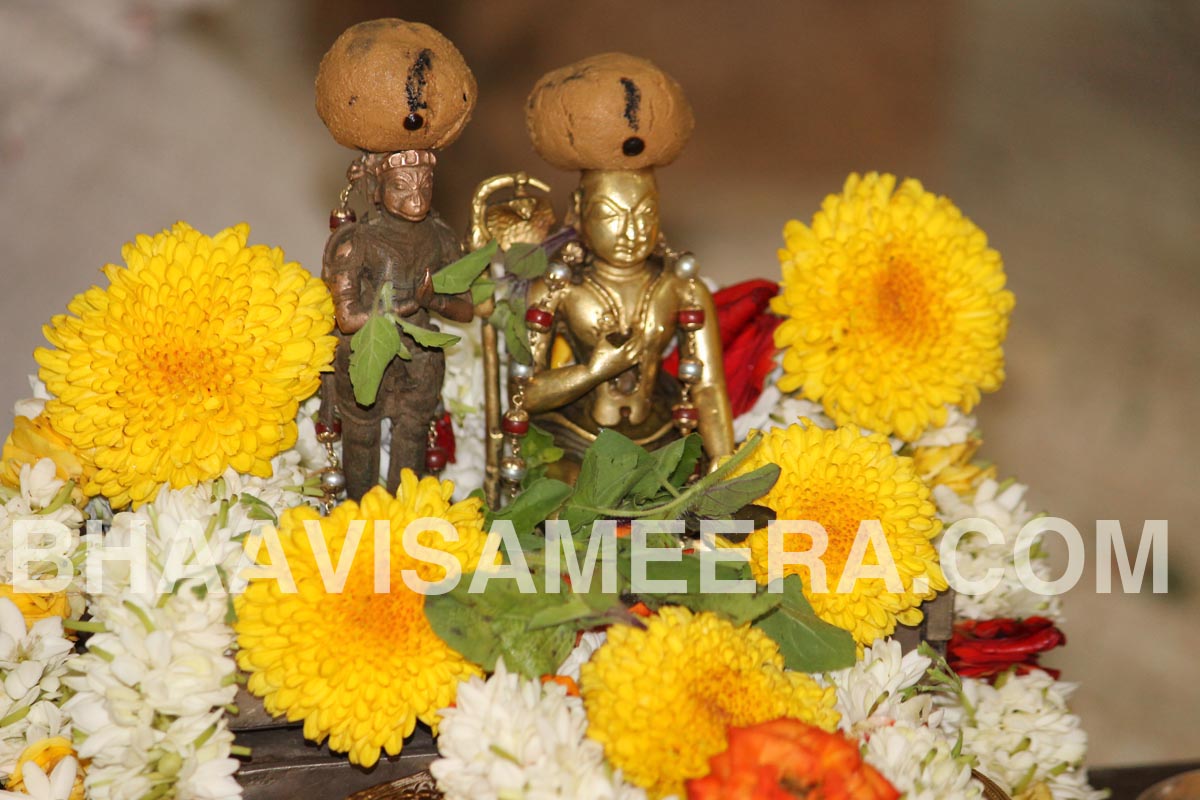Sonda- The place
Sode, at about 2000 ft altitude, is surrounded by Shalmali river and is situated in the North Kannada district some 20 kms from Sirsi town. Sode is also known as Sonde and Swadi. Over five centuries ago this was the capital of a province under the aegis of the Vijayanagar empire. Following the fall of the Vijayanagar empire, it became the capital of an independent kingdom for 250 years between the 16-18th centuries. During its heydays, the capital was a very important place. The Swadi kingdom included then towns known today as Karwar, Ankola, Hulekal, Sambrani, Ponda, Jambulin.
The mutt is approached by road through beautiful, verdant, thick forests, tall hills and river.
As one nears the Sode Mutt, first to be sighted is the lake known as Hayagriva Samudra. Towards the west of this lake stands a Dvaja sthamba in front of the Rama Thrivikrama temple. Both the Lord’s vehicles – the Hamsa and Garuda are depicted on this Dvaja sthamba.
The Rama Thrivikrama temple consists of three parts – the sanctum sanctorum with the lovely idol of Lord Thrivikrama, the stone chariot used for transporting the Lord’s idol and the idol of Sri Lakshmi Devi in the chariot.
To the south of this temple stands a stone inscription recording the grant of land to the temple by Arasappa Nayaka and connected events
To the north of the temple and down some 24 steps is the Rajangana which also houses the mutt’s offices. Here is the entrance to the mutt, the puja mandir (ananthaasana), stores and kitchen.
Further down a flight of 24 steps, is the ‘Dhavala Ganga’ pushkarini along with a smaller ‘Sheethala Ganga’ tank nearby. The waters of these tanks are believed to be a confluence of all holy rivers of India. Around the pushkarini are located several small temples consecrated by Sri Vadiraja Teertha-Sri Chandramouleshwara on the south, Sri Veera Anjaneya on the west, Sri Venugopalaswamy on the north.
Towards the east of the pushkarini is situated the pancha vrindavans with the vrindavan of Sri Vadiraja Teertha situated in the centre surrounded by four more vrindavans forming a perfect square. In front of the vrindavans is the temple for Sri Vedavyasa. On the right (to the south) of the vrindavans is the temple for the Kshetrapala – Bhootharaja. To the north is the naga vana.
Also situated near the pancha vrindavans are four moola vrindavans and five mruttika vrindavans.
The latest addition (inaugurated in 2000) is the Akhyaana Mandira situated in front of the pancha vrindavans.
Well planned and built residential accommodation with all facilities is available for visiting pilgrims.
